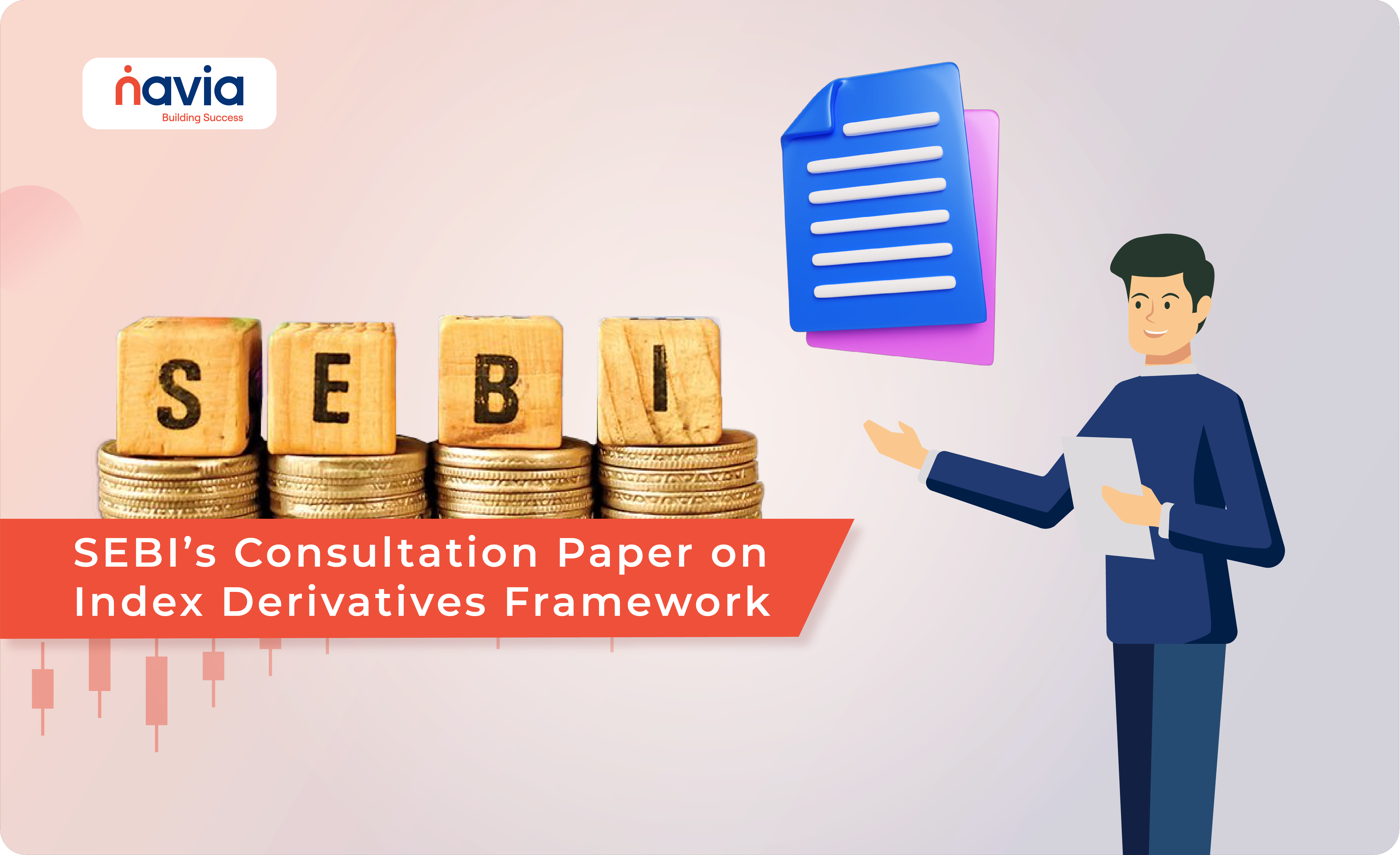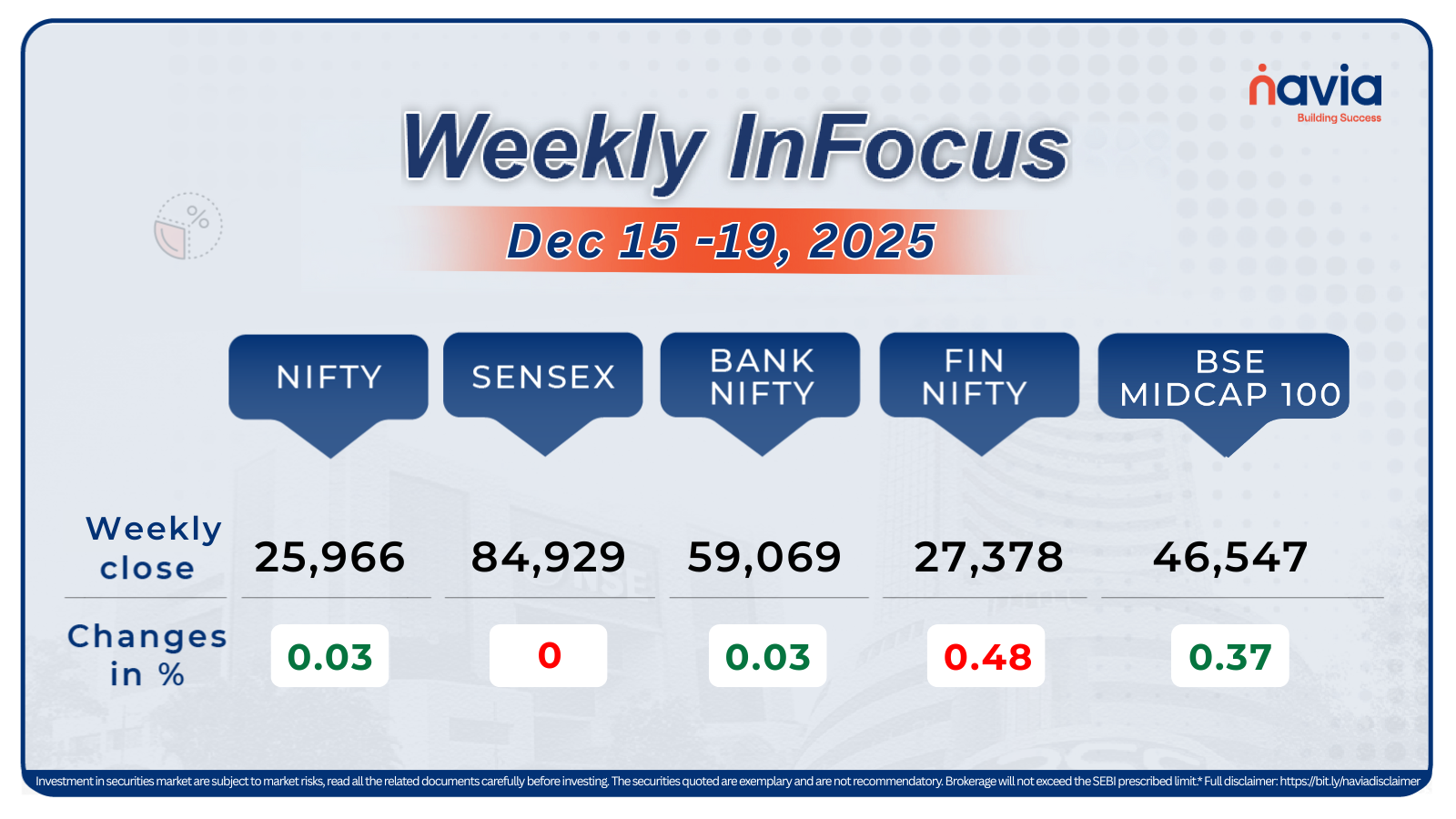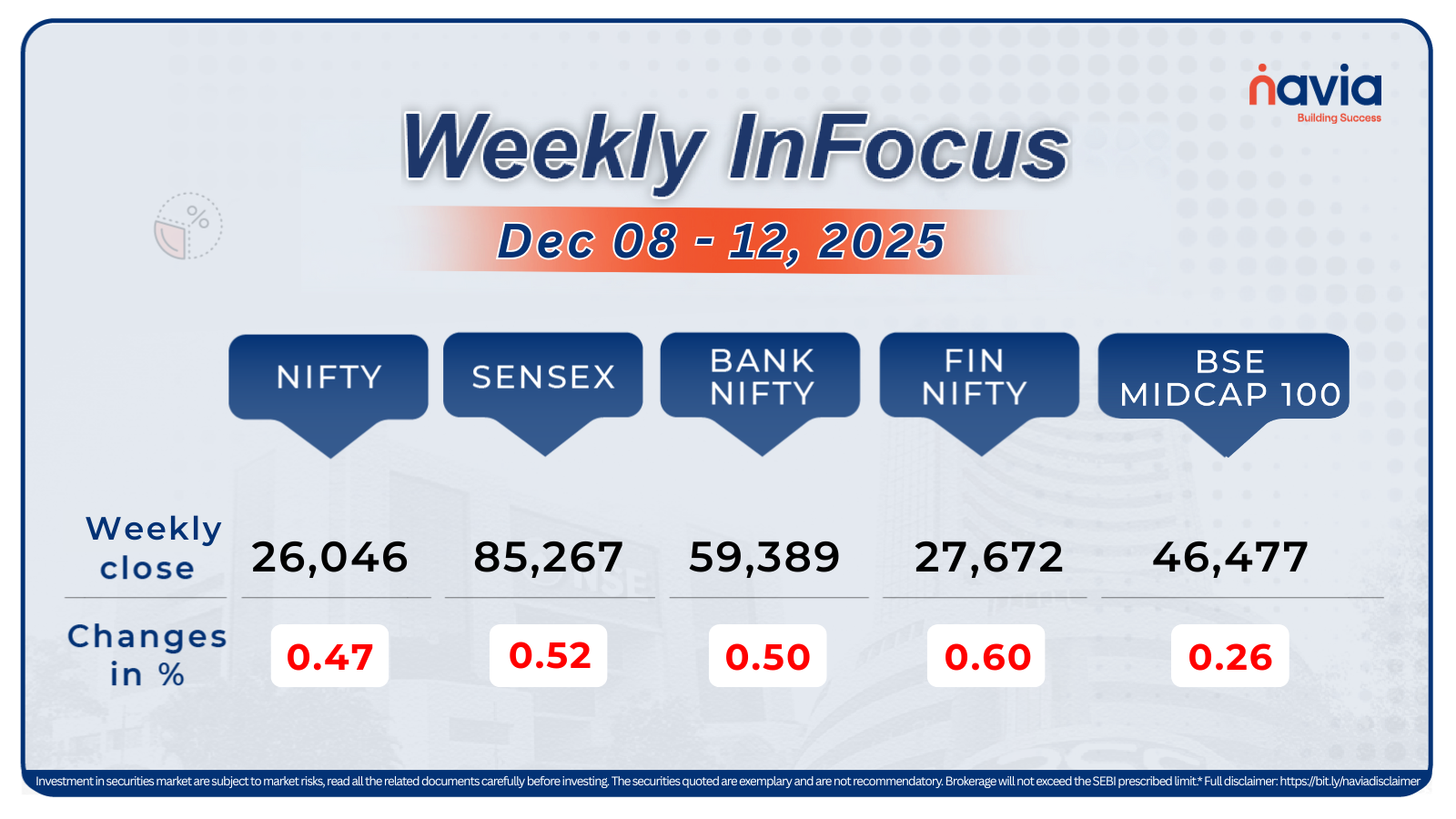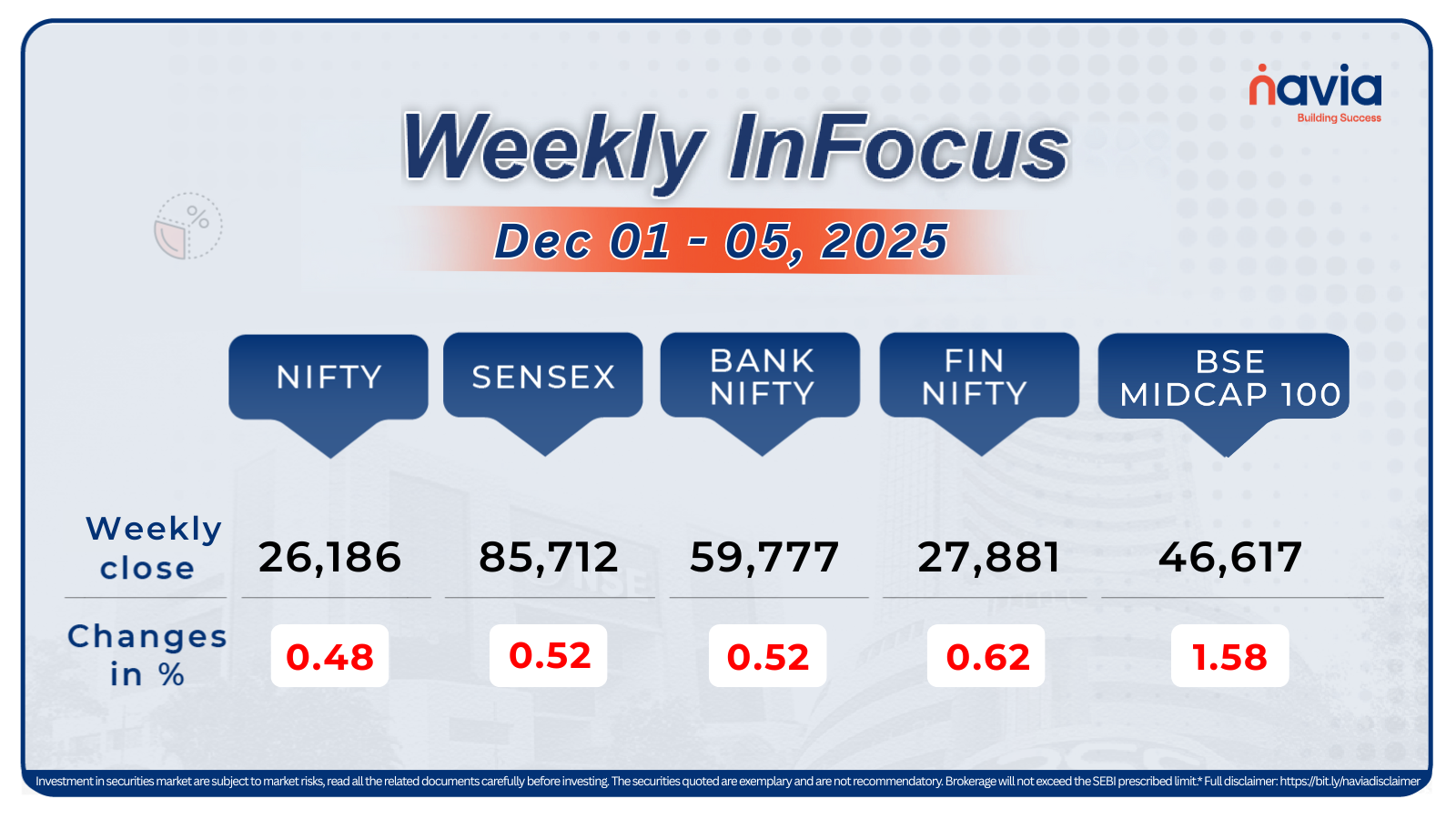SEBI’s Consultation Paper on Index Derivatives Framework

SEBI has recently released a consultation paper titled “Measures to Strengthen Index Derivatives Framework for Increased Investor Protection and Market Stability.” The main objective of this paper is to propose new measures aimed at enhancing the safety and stability of the derivatives market, particularly focusing on protecting investors like you.
| S.No | Summary of the Proposals |
|---|---|
| 1 | Rationalization of Strike Prices: Proposal to reduce the number of strike prices available. |
| 2 | Upfront Collection of Option Premiums: 100% of the option premium to be collected upfront. |
| 3 | Removal of Calendar Spread Benefit: Eliminate margin benefits on expiry day, affecting contracts expiring on the same day. |
| 4 | Intraday Monitoring of Position Limits: Real-time monitoring instead of end-of-day checks. |
| 5 | Increase in Minimum Contract Size: Increase from ₹5-10 lakhs to ₹15-20 lakhs, eventually to ₹20-30 lakhs. |
| 6 | Rationalization of Weekly Index Products: Limit weekly options to a single benchmark index. |
| 7 | Increase in Margin Near Expiry: Higher margins required on expiry day and the day before. |
| 8 | Navia’s Stance: In favor of SEBI’s proposals except for the increase in lot size due to increased risk for retail investors. |
What Does the Paper Suggest and its Potential impact ?
Here’s a breakdown of the key proposals:
Rationalization of Strike Prices:
Currently, a large number of strike prices are available for options trading, which can spread out trading activity and increase the chances of artificial trades. SEBI proposes to streamline the number of strike prices to focus liquidity and reduce unnecessary market volatility.
⮞ Impact on Liquidity: By reducing the number of available strike prices, trading activity could become more concentrated on fewer options, potentially increasing liquidity in those options. This could lead to tighter bid-ask spreads, less slippage and lower transactions costs which might be beneficial for active traders.
Upfront Collection of Option Premiums:
It’s suggested that the premium for options should be collected upfront from buyers. This move aims to prevent excessive leverage and reduce the risk of market-wide practices that could destabilize the market.
⮞ Impact: For investors, this would mean lower risk exposure, as the total capital at risk is more clearly defined upfront.
Removal of Calendar Spread Benefit on Expiry Day:
SEBI proposes to eliminate the margin benefits for positions that involve contracts expiring on the same day. This is to reduce the risk associated with expiry day trading, which often sees heightened speculative activity.
⮞ Impact on Margin Requirements: Traders using calendar spreads would face higher margin requirements near expiry, potentially reducing the attractiveness of this strategy. This might lead to a reduction in the volume of calendar spreads and lower overall market risk.
⮞ Volatility Control: Reduced speculative trading near expiry could lead to less volatility on those days, which could benefit investors who prefer more stable market conditions.
Intraday Monitoring of Position Limits:
The paper suggests that position limits should be monitored in real-time rather than just at the end of the trading day. This would prevent participants from taking on excessive risk during the trading day.
⮞ Impact on Trading Behavior: Real-time monitoring could prevent traders from building excessive positions during the trading day, leading to more conservative trading practices. This could reduce the likelihood of sudden, large market moves due to position liquidations.
Increase in Minimum Contract Size:
To reduce the inherent risk in derivatives, SEBI recommends increasing the minimum contract size from the current ₹5-10 lakhs to ₹15-20 lakhs initially, and eventually to ₹20-30 lakhs. This would make trading in derivatives more suited to seasoned investors with sufficient capital.
⮞ Impact on Retail Investors: Increasing the minimum contract size could make derivatives trading less accessible to smaller retail investors, who might not have the capital to meet the new requirements. This could reduce market participation among retail traders.
Rationalization of Weekly Index Products:
Currently, weekly options are available on multiple indices, which SEBI believes contributes to speculative trading. The paper suggests limiting weekly options to a single benchmark index to reduce speculative activity and enhance market stability.
⮞ Impact on Speculative Trading: Limiting weekly options to a single index might reduce speculative trading activity, leading to lower overall volumes but potentially more stability in the market.
Increase in Margin Near Expiry:
On expiry day and the day before, SEBI proposes increasing the margins required to trade, making it costlier to speculate heavily during these volatile periods.
⮞ Impact on Trading Costs: Higher margins near expiry would increase the cost of holding positions during the most volatile periods, possibly leading to a reduction in speculative positions.
Overall Market Impact:
⮞ Reduced Speculation: The proposed changes are likely to reduce speculative trading, which could lead to lower overall trading volumes, particularly in high-risk strategies like short options or calendar spreads.
⮞ Increased Market Stability: With reduced speculation and tighter risk controls, the market could become more stable, potentially lowering volatility during key periods like expiry days.
⮞ Cost Implications for Investors: While some measures could increase costs (e.g., higher margins, larger contract sizes), others could lower them through increased liquidity and tighter spreads in selected products.
Navia’s Stance on SEBI’s Proposals
● At Navia, we are in favor of the majority of SEBI’s proposed measures aimed at enhancing investor protection and market stability. We believe that these changes will contribute to a safer and more stable trading environment, benefiting all market participants.
● However, we do have reservations regarding the proposal to increase the minimum contract size. While the intent is to reduce risk by ensuring that only well-capitalized investors participate, this could inadvertently force retail investors to double their exposure in order to maintain their current positions. This increased exposure might lead to higher risks for retail participants, counteracting the protective intent of the measure.
We Value Your Feedback
We encourage you to share your thoughts and comments on these proposed changes by submitting your response here. It would only take 1 minute of your time. Your feedback is crucial as it helps us understand your perspective and advocate for your interests.
Feedback Questions
Understanding of Proposed Changes:
Q1) How well do you understand the proposed changes to the index derivatives framework?
Impact on Your Trading Strategy:
Q2) How do you think these changes will impact your current trading strategies?
Support for the Changes:
Q3) Do you support SEBI’s proposed measures to increase investor protection and market stability?

Table 1: Trend in Notional Turnover near Contract Expiry for a Weekly Expiry in July 2024
This table illustrates the concentration of trading activity in the final minutes leading up to the expiry of weekly index derivatives. For Sensex and Bankex almost all the action is on the expiry day only.
| Metric | SENSEX | BANKEX | NIFTY | BANKNIFTY |
|---|---|---|---|---|
| Last 30 mins as % of expiry day turnover | 27% | 20% | 16% | 13% |
| Last 60 mins as % of expiry day turnover | 40% | 36% | 28% | 26% |
| Expiry day as % of 5 days before (incl. expiry day) | 96% | 97% | 64% | 62% |
Table 2: Trend in Annual Turnover in F&O Segment
Index Options Domination: There is a notable shift towards index options, with their premium turnover increasing dramatically over the years, from ₹4.5 Lakh Crore in FY18 to ₹138 Lakh Crore in FY24.
Cash Market vs. F&O: The turnover in the F&O segment has grown significantly faster than in the cash market, indicating a strong preference among traders for derivative instruments over direct stock trading.
| Year | Index Futures (₹ Lakh Cr.) | Stock Futures (₹ Lakh Cr.) | Index Options (Premium in ₹ Lakh Cr.) | Stock Options (Premium in ₹ Lakh Cr.) | Notional Turnover (₹ Lakh Cr.) | Turnover in Cash Market (₹ Lakh Cr.) |
|---|---|---|---|---|---|---|
| FY18 | 48 | 156 | 4.5 | 1.5 | 1650 | 83.2 |
| FY19 | 55.5 | 161.5 | 6.5 | 2 | 2376 | 87.2 |
| FY20 | 67 | 148.5 | 11 | 2.5 | 3445 | 96.6 |
| FY21 | 90.5 | 181 | 26.5 | 6 | 6436 | 164.4 |
| FY22 | 84.5 | 210.5 | 58.5 | 10.5 | 16952 | 179.1 |
| FY23 | 95 | 190.5 | 109.5 | 9.5 | 38223 | 143.3 |
| FY24 | 74 | 255.5 | 138 | 14 | 79927 | 217.3 |
Table 3: Trend in Annual Turnover of Individual Investors in F&O Segment
Shift Towards Index Options: Individual investors have increasingly moved towards trading index options, with their participation in this segment growing from 2% in FY18 to 41% in FY24.
Cash Market Participation: The gross turnover of individual investors in the cash market has also seen fluctuations, with a notable increase in FY24, indicating a renewed interest in direct stock trading alongside derivatives.
| Year | Total Gross Turnover (₹ Lakh Cr.) | % Index Futures | % Stock Futures | % Index Options | % Stock Options | Gross Individual Turnover in Cash Market (₹ Lakh Cr.) |
|---|---|---|---|---|---|---|
| FY18 | 65.8 | 24% | 74% | 2% | 1% | 27.9 |
| FY19 | 65.7 | 28% | 68% | 3% | 1% | 31.1 |
| FY20 | 62.6 | 35% | 59% | 5% | 1% | 34.9 |
| FY21 | 90.1 | 39% | 49% | 9% | 2% | 69.3 |
| FY22 | 87.2 | 29% | 45% | 23% | 4% | 67.4 |
| FY23 | 101.3 | 30% | 29% | 38% | 3% | 48.6 |
| FY24 | 117.4 | 19% | 36% | 41% | 3% | 71.3 |
We’d Love to hear from you





